前言
前一段时间做了一个项目,需要解决中文、繁体、英文的国际化问题,所以本文将详细介绍springboot页面国际化配置的过程
方法如下
1.引入依赖pom.xml
|
1
2
3
4
5
6
7
8
|
<dependency>
<groupId>org.springframework.boot</groupId>
<artifactId>spring-boot-starter-web</artifactId>
</dependency>
<dependency>
<groupId>org.springframework.boot</groupId>
<artifactId>spring-boot-starter-thymeleaf</artifactId>
</dependency>
|
2.导入网页资源,这里给大家推荐一个我自己在使用的页面资源,SB ADMIN-2
html页面放在templates目录下,这是thymeleaf默认的解析目录,其他的样式文件放在static目录下
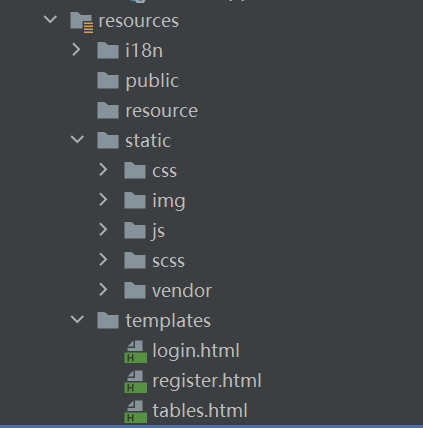
3.接管spring Mvc,自定义url访问路径,可做可不做
建一个config目录,在这里建一个myWebMvcConfig
|
1
2
3
4
5
6
7
8
9
10
11
12
13
14
15
16
17
|
import org.springframework.context.annotation.Bean;
import org.springframework.context.annotation.Configuration;
import org.springframework.web.servlet.LocaleResolver;
import org.springframework.web.servlet.config.annotation.ViewControllerRegistry;
import org.springframework.web.servlet.config.annotation.WebMvcConfigurer;
@Configuration
public class myWebMvcConfig implements WebMvcConfigurer {
@Override
public void addViewControllers(ViewControllerRegistry registry) {
registry.addViewController("/wq").setViewName("register");//localhost:8080/wq
registry.addViewController("/").setViewName("register");//localhpst:8080/
registry.addViewController("/register.html").setViewName("register");
//localhost:8080/register.html
}
}
|
路径可以设置多个,这样只要是这三个url,spring 都会访问register.html
还有一种方式也能实现
|
1
2
3
4
5
6
7
8
9
10
|
import org.springframework.stereotype.Controller;
import org.springframework.web.bind.annotation.RequestMapping;
@Controller
public class demoController {
@RequestMapping({"/","/wq"})
public String test(){
return "register";
}
}
|
4.国际化配置文件:en_US英文,zh_CN中文

点击左上角加号,便可以添加配置的属性,只要在右边填写相应的中英文即可
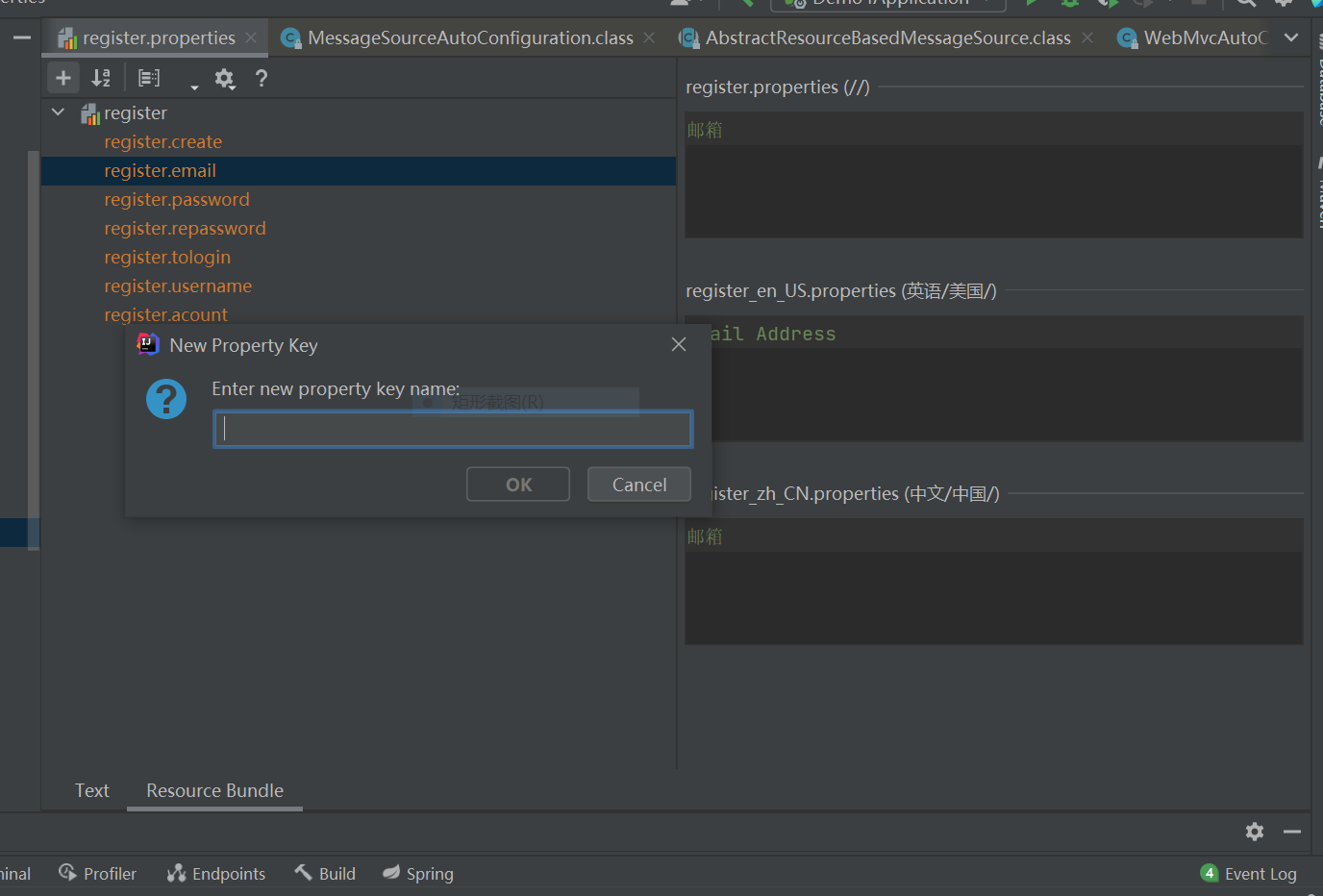
5. 配置文件已经写好,如何在我们的页面中使用呢?thyme leaf的作用又来了
首先在你的网页添加这样的头部
|
1
|
<html lang="en" xmlns:th="http://www.thymeleaf.org">
|
在所有的html属性前加**th:**就被thymeleaf接管了,根据thymeleaf 语法,获取国际化值使用**#{}**,本地值用**${}**,url用**@{}**
|
1
2
|
<a th:href="@{/register.html(l='zh_CN')}" rel="external nofollow" >中文 </a>
<a th:href="@{/register.html(l='en_US')}" rel="external nofollow" >English </a>
|
6. 页面和配置文件都准备好了,怎样实现跳转呢?
在WebMvcAutoConfiguration.class中
|
1
2
3
4
5
6
7
8
9
10
11
12
13
|
@Bean
@ConditionalOnMissingBean(
name = {"localeResolver"}
)
public LocaleResolver localeResolver() {
if (this.webProperties.getLocaleResolver() == org.springframework.boot.autoconfigure.web.WebProperties.LocaleResolver.FIXED) {
return new FixedLocaleResolver(this.webProperties.getLocale());
} else {
AcceptHeaderLocaleResolver localeResolver = new AcceptHeaderLocaleResolver();
localeResolver.setDefaultLocale(this.webProperties.getLocale());
return localeResolver;
}
}
|
我们再找到AcceptHeaderLocaleResolver.class,发现它实现了LocaleResolver
|
1
2
3
4
|
public class AcceptHeaderLocaleResolver implements LocaleResolver {
private final List<Locale> supportedLocales = new ArrayList(4);
@Nullable
private Locale defaultLocale;
|
那我们就编写自己的LocaleResolver
|
1
2
3
4
5
6
7
8
9
10
11
12
13
14
15
16
17
18
19
|
public class myLocaleResolver implements LocaleResolver {
@Override
public Locale resolveLocale(HttpServletRequest request) {
String mylocale=request.getParameter("l");
Locale locale=Locale.getDefault();
if(!StringUtils.isEmpty(mylocale)){
String[] split=mylocale.split("_");
locale=new Locale(split[0],split[1]);
}
System.out.println("debug====>"+mylocale);
return locale;
}
@Override
public void setLocale(HttpServletRequest request, HttpServletResponse response, Locale locale) {
}
}
|
然后在spring配置中注入myLocaleResolver
|
1
2
3
4
5
|
@Bean
public LocaleResolver localeResolver(){
return new myLocaleResolver();
}
|
**注意:方法名必须是localeResolver**,**因为源码中名字为localeResolver的bean**
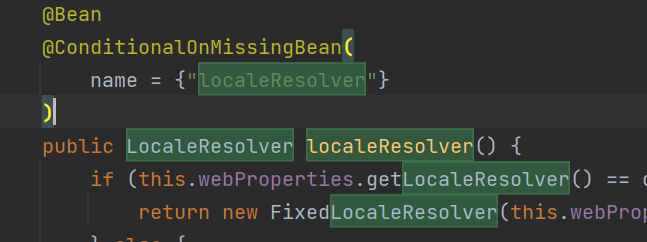
7. 最后我们来测试一下
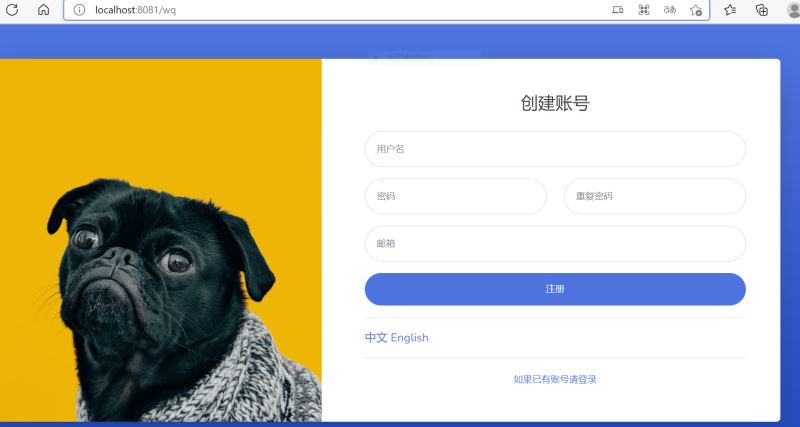
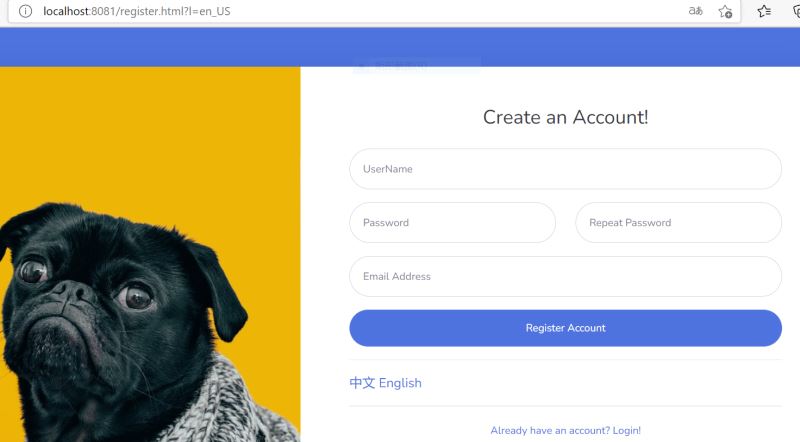
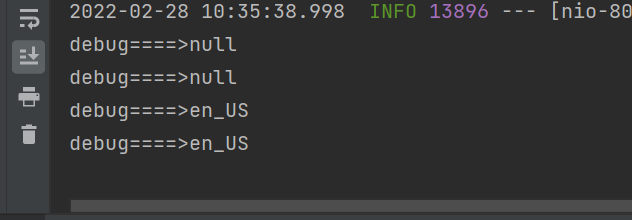
而且控制台输出也没问题
总结
|